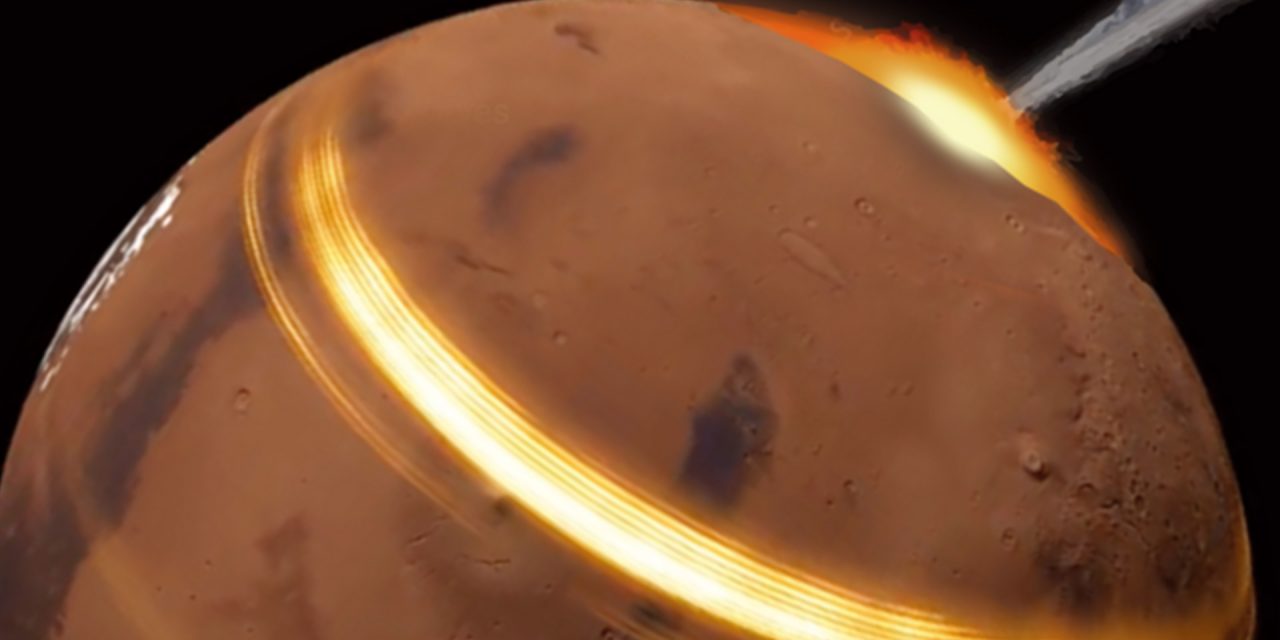A meteorite striking Mars has given researchers the opportunity to study the way in which seismic waves travel across the red planet’s surface
Researchers working in the Marsquake Service at ETH Zurich have been analysing the measurements made by the NASA InSight mission’s seismometer on one of our neighbouring planets.
For almost three years, the only seismic waves it detected on Mars were ones that propagated from the respective quake’s focus, or hypocentre, through the depths of the planet.
However, the researchers were hoping all along for an event that would also generate waves travelling along the planet’s surface.
Their wait was finally rewarded on 24 December 2021, when a meteorite impact on Mars yielded the type of surface waves they had been long anticipating.
Atypical characteristics in the quake readings led the researchers to suspect its source was near the surface, so they contacted colleagues who were working with a probe orbiting Mars.
And indeed, images taken by the Mars Reconnaissance Orbiter in late December 2021 showed a large impact crater about 3,500km (~2,200 miles) from InSight.
meteorite impact
Lead author Doyeon Kim, a geophysicist and senior research scientist at ETH Zurich’s Institute of Geophysics, said: “The location was a good match with our estimates for the source of the quake.”
The researchers were also able to pinpoint a meteorite impact at just under 7,500km from InSight as the source of a second atypical quake.
Because the hypocentre of each earthquake was at the surface, they generated not only seismic body waves similar to previously recorded Marsquakes in which the hypocentres were at greater depth, but also waves that propagated along the planet’s surface.
Kim added: “This is the first time seismic surface waves have been observed on a planet other than Earth. Not even the Apollo missions to the Moon managed it.”
What makes the seismic surface waves so important to researchers is that they provide information about the structure of the Martian crust. Seismic body waves, which travel through the planet’s interior during a quake, have so far provided insights into Mars’ core and mantle, but have revealed little about the crust away from the lander itself.
the early days of mars
Kim advised: “Until now, our knowledge of the Martian crust has been based on only a single point measurement under the InSight lander.”
The result of the surface wave analysis surprised him. On average, the Martian crust between the impact sites and InSight’s seismometer has a very uniform structure and high density.
Directly below the lander, however, the researchers had previously detected three layers of crust that implied a lower density.
The new findings are remarkable because a planet’s crust provides important clues about how that planet formed and evolved.
Since the crust itself is the result of early dynamic processes in the mantle and subsequent magmatic processes, it can tell us about conditions billions of years ago and the timeline of impacts, which were particularly common in Mars’ early days.
Kim explained: “The speed at which surface waves propagate depends on their frequency, which in turn depends on their depth.”
By measuring changes in velocity in the seismic data across different frequencies, it is possible to infer how the velocity changes at different depths, because each frequency is sensitive to different depths.
This provides the basis for estimating the average density of the rock, because the seismic velocity also depends on the elastic properties of the material through which the waves travel.
This data allowed the researchers to determine the structure of the crust at depths of between roughly 5km and 30km below the surface of Mars.
a long wait for the wave
The ETH Zurich researchers are expecting further results soon.
In May 2022, InSight observed the largest Marsquake to date, with a magnitude of 5. It also recorded seismic surface waves generated by this shallow event.
This happened just in time, since the InSight mission will soon be coming to an end now that the lander’s solar panels are covered in dust, and it is running out of power.
An initial analysis of the data confirms findings that the researchers obtained from the other two meteorite impacts.
Kim said: “It’s crazy. We’d been waiting for so long for these waves, and now, just months after the meteorite impacts, we observed this big quake that produced extremely rich surface waves.
“These allow us to see even deeper into the crust, to a depth of about 90km.”
The research is published in Science.
Image: Wavefield simulation. First observation of surface waves on Mars reveals details of planet’s crust. © ETH Zurich, Doyeon Kim, Martin van Driel, and Christian Boehm.












